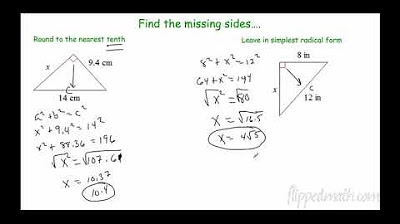Energy, Work and Power
Summary
TLDRIn this lesson, Mr. Andersen explores the concepts of energy, work, and power. He defines energy as the ability to do work, explaining that work is the product of force and distance, measured in joules. Using the example of lifting a can of Coke up a set of stairs, he illustrates the calculation of work done as 12 joules. Power is introduced as the rate of doing work, measured in watts, with a comparison to horsepower. The lesson emphasizes the consistency of work done, regardless of the method used, while highlighting the variations in power based on the time taken.
Takeaways
- 😀 Energy can be defined as anything that has the ability to do work, such as objects in motion, electricity, matter, light, and sound.
- 💡 Work in scientific terms is defined as a force applied over a distance, measured in joules.
- 🥤 Carrying a can of Coke weighing 4.0 newtons up a set of stairs that is 3.0 meters high involves doing 12 joules of work.
- 🏃♂️ The method of reaching the top (walking, climbing, or throwing) does not change the amount of work done as long as the distance and force are the same.
- ⏱️ Power is defined as the amount of work done in a given period of time, allowing us to measure how quickly work is accomplished.
- ⚡ If you carry the can of Coke up the stairs in 1 second, the power exerted is 12 watts; if it takes 10 seconds, the power drops to 1.2 watts.
- 🐎 Horsepower is a common measurement of power in the US, with 1 horsepower equating to approximately 746 watts.
- 🔄 Converting 12 watts of power to horsepower results in 0.0040 horsepower, indicating the relative weakness of that effort.
- 💪 It's important to consider not just the object being moved (the can of Coke), but also the weight of the person moving it, which contributes to the total power exerted.
- 🌟 Understanding energy, work, and power is crucial in various fields, including physics, engineering, and everyday life applications.
Q & A
What is energy?
-Energy is the ability to do work and can be found in various forms, such as kinetic energy (in motion), potential energy (due to position), electrical energy, chemical energy, light energy, and sound energy.
How is work defined in scientific terms?
-In science, work is defined as the product of force and distance, expressed mathematically as Work = Force x Distance. It is measured in joules.
Can you provide an example of work being done?
-If you carry a can of Coke weighing 4.0 newtons up a flight of stairs that is 3.0 meters high, the work done is calculated as 4.0 newtons x 3.0 meters, resulting in 12 joules of work.
Does the method of moving an object affect the amount of work done?
-No, the amount of work done is the same regardless of the method used to move the object, as long as the force and distance are consistent.
What is power, and how is it calculated?
-Power is defined as the amount of work done over a given period of time. It is calculated by dividing work (in joules) by time (in seconds), resulting in a measurement in watts.
How does the time taken to perform work affect power?
-The faster work is done, the higher the power. For example, if you move the can of Coke to the top of the stairs in 1.0 second, the power is 12 watts. If it takes 10 seconds, the power decreases to 1.2 watts.
What is horsepower, and how does it relate to watts?
-Horsepower is a unit of power commonly used in engines. One horsepower is equivalent to approximately 746 watts.
What is the horsepower equivalent when moving a can of Coke in 1.0 second?
-If the can of Coke is moved to the top of the stairs in 1.0 second, the power output is 12 watts, which is approximately 0.0040 horsepower.
What other factors should be considered when calculating power output?
-Besides the object being moved, one should also consider the weight of the person performing the action, as it adds to the total work being done.
Why is understanding energy, work, and power important?
-Understanding these concepts is essential for grasping fundamental principles of physics, which have applications in various fields including engineering, mechanics, and everyday life.
Outlines

This section is available to paid users only. Please upgrade to access this part.
Upgrade NowMindmap

This section is available to paid users only. Please upgrade to access this part.
Upgrade NowKeywords

This section is available to paid users only. Please upgrade to access this part.
Upgrade NowHighlights

This section is available to paid users only. Please upgrade to access this part.
Upgrade NowTranscripts

This section is available to paid users only. Please upgrade to access this part.
Upgrade NowBrowse More Related Video

English Expressions: three-word phrasal verbs

Penggunaan Simple Present Tense dan Contohnya | Kampung Inggris LC

ESL Writing - Summarizing and Paraphrasing

Mastering the Nominative Case in German: A Complete Guide! (Beginner / A1-A2) - 1080p/Full HD 🔥

Geometry – 7.1 Pythagorean Theorem and Its Converse

Symmetrical Name Monsters with Mr. Snyder

Rounding and Working with Significant Figures in Physics
5.0 / 5 (0 votes)